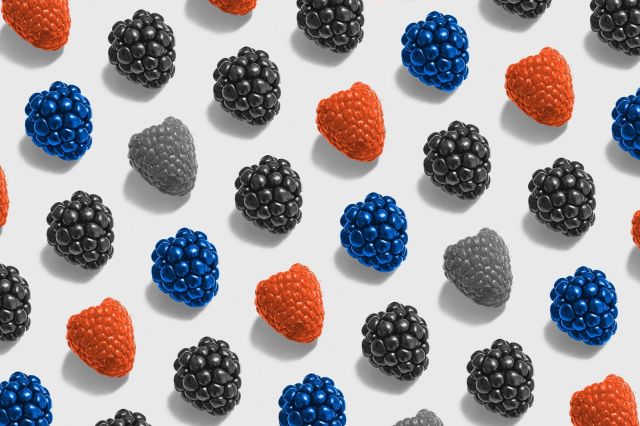
Is the “Five-Second Rule” Real?
Most people know the “five-second rule”: the idea that if food that’s fallen on the floor has been there less than five seconds, it’s still acceptable to eat. No one knows the origins of this questionable rule — and plenty of people think it’s kind of gross — but that hasn’t stopped anyone from picking up a dropped Oreo and shouting “five-second rule!” before.
Though its origins may be murky, actual scientists have devoted time and resources to testing the five-second rule. And surprisingly, it’s not an entirely bogus theory — depending on the cleanliness of the floor.
To be clear, no scientist has gone on record recommending that you eat dropped food. However, a science experiment conducted at the University of Illinois Urbana-Champaign proved that as long as the food was picked up within the five-second time limit, the presence of microorganisms on the dropped food was minimal. However, the experiment was conducted after first sanitizing the flooring, and it only applied to hard flooring like tile and wood, which are less likely to serve as an incubator for pathogens. No testing was conducted on carpeting and other soft surfaces, which can hold moisture and become breeding grounds for bacteria.
Let’s cut to the chase: It’s definitely not recommended to blindly follow the five-second rule. You have no way of knowing which pathogens are on your floor, so unless you regularly disinfect, it’s best to play it safe. According to the experts, dry foods are slightly safer than wet ones because moisture is a great medium for pathogens to attach themselves. So, a potato chip or cracker might acquire a minimal pathogen transfer whereas an apple or slice of banana might test positive for a higher pathogen count. But we recommend a new rule: When in doubt, throw it out.

Why Do You Cry When You Cut Onions?
There’s no need to cry over spilled milk, but what about chopped onions? You can thank a chemical combination of enzymes and sulfur for the tears that well up while you make dinner.
Onions use sulfur to make a mixture of amino acids and enzymes during the growing process. The acids and enzymes are separated and stored in different regions of the onion’s cells, which are called vacuoles. While the onion remains whole, the amino acids and enzymes in the onion’s cells remain separated. Once you cut into the onion, however, everything mixes together. When the two substances are combined, they form a chemical known as syn-Propanethial-S-oxide, or lachrymatory factor (LF). LF is an irritant that’s easily vaporized when it reacts with the air.
LF isn’t strong enough to affect tougher parts of your body such as your skin, but it can irritate more sensitive regions. As the vapors waft up toward your face, your eyes will begin to sting. Your body — sensing the irritant — will release a torrent of tears in an attempt to wash the chemicals from your eyes. Luckily, LF can’t do any serious damage, even in high quantities.
Producing LF is the onion’s way of defending against anything that may want to eat it. As soon as an animal bites into the root, its eyes start to burn and it’s reminded to stay away from onions.
Unfortunately for onions, humans are persistent.

How Do Taste Buds Work?
Taste buds are the reason we pucker our lips when we suck on a lemon wedge or smile when savor a piece of chocolate. They’re how we can identify our favorite foods. In fact, without taste buds we wouldn’t be able to sense the five basic tastes: salty, sweet, sour, bitter, and umami. But what exactly are taste buds and how do they work?
Every tongue is covered in visible bumps known as papillae that fall into four categories: filiform, fungiform, circumvallate, and foliate. Each papillae type except for filiform carries a number of taste buds that are continuously being replaced. In total, every tongue has an average of 10,000 taste buds, which are replaced about every two weeks.
Despite what some may believe, there are no specific areas of the tongue responsible for a particular taste. Instead, it’s the taste receptors scattered across your tongue that pinpoint the proper flavor.
The taste buds in your different papillae are simply a combination of basal cells, columnar (structural) cells, and receptor cells. Different types of receptor cells are coated with proteins intended to attract specific chemicals that are linked to one of the five basic tastes. When the receptor cell identifies the chemical it binds with, it will send a signal through a neural network to the brain via microvilli, or microscopic hairs on every taste bud.
There is more to taste than just the tongue, however. Lining the uppermost part of the human nose are olfactory receptors that are responsible for smell, and they send messages that further hone in on specific tastes. When you chew food, a chemical is released that travels to the upper part of your nose and activates the olfactory receptor. These receptors work in conjunction with the receptors on taste buds to help the brain recognize the taste. This helps explain why a cold or allergies can hinder one’s sense of taste, making everything taste bland.
More Interesting Reads

Does Tryptophan Really Make You Tired?
Anyone who’s passed out after indulging in a Thanksgiving feast knows the theory: tryptophan, an amino acid found in turkey, makes you sleepy. But is this conventional wisdom actually true?
The short answer is … not exactly. L-tryptophan, as it’s officially known, can also be found in everything from chicken and yogurt to fish and cheese, none of which are typically associated with sleepiness. Once ingested, tryptophan is converted into the B-vitamin niacin, which helps create the neurotransmitter serotonin. Serotonin plays a key role in melatonin levels and sleep itself, hence the apparent causal link between turkey and fatigue.
Plenty of other amino acids are present in turkey, however, and most of them are found in greater abundance — meaning that, when all those chemicals are rushing to your brain after your second helping, tryptophan rarely wins the race.
If, however, the tryptophan gets a little assistance in the form of carbohydrates, it gets a better shot at dominating your system. Eating carbs — which abound in Thanksgiving dishes like mashed potatoes and stuffing — produces insulin, which flushes every amino acid except tryptophan from your bloodstream. Thus, your post-Thanksgiving sleepiness is actually the result of a perfect storm composed of tryptophan, carbs, and the large portions typically associated with the holiday.

What Are Superfoods?
While many nutritionists and physicians recommend healthy eating over fad diets, some foods offer more nutritional benefits than others. That’s why, in recent years, you might have heard about “superfoods” and why you should incorporate them into your diet.
The term “superfood” doesn’t come from medical science. Instead, it was designed by marketers at food companies to help boost sales. But in general, the term applies to particular foods that are nutrient-rich and provide significant health benefits when consumed regularly.
One example of a superfood are eggs, which feature two powerful antioxidants: lutein and zeaxanthin. They are also low in calories, averaging 77 calories per egg. And most importantly, they’re full of nutrients such as iron, phosphorous, selenium, and a myriad of vitamins including A, B2, B5, and B12.
There are also a variety of fruits and vegetables that qualify as superfoods, including berries. Berries are rich in antioxidants, high in fiber, and contain a wide array of vitamins, particularly Vitamins C and K1, manganese, copper, and folate. But nutrient levels can vary widely between berries. For example, strawberries have the highest vitamin C levels of the superfood berries. This heart-healthy food can also help lower inflammation and improve blood sugar and insulin response.
While the phrase “superfoods” might not have a hard definition, there’s plenty of evidence to show that certain foods can improve your health and reduce your risk of serious conditions such as cancer, high blood pressure, and heart disease.











